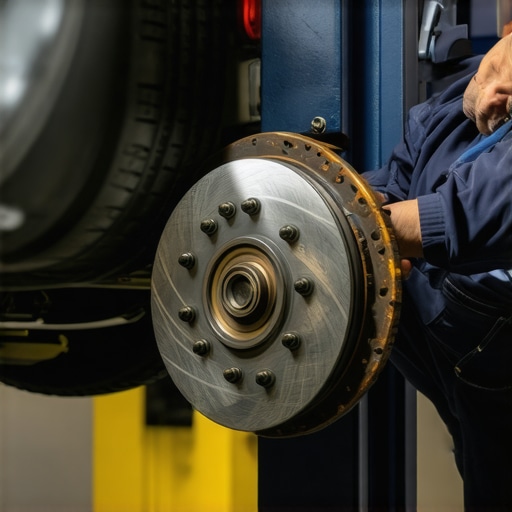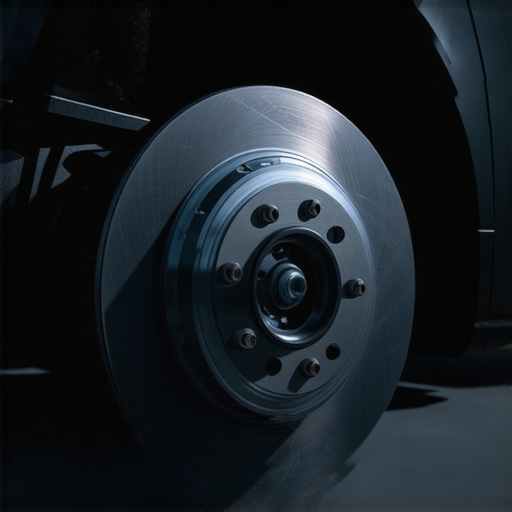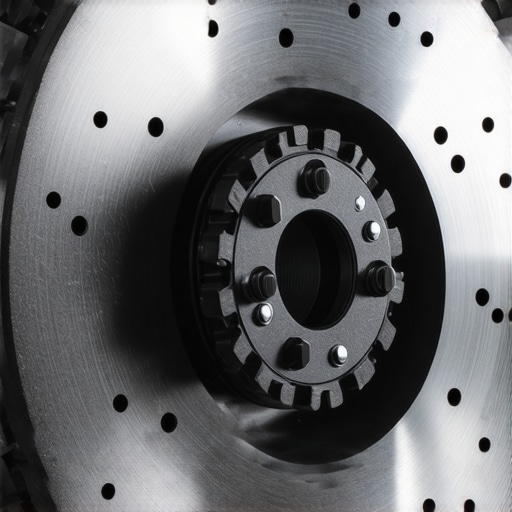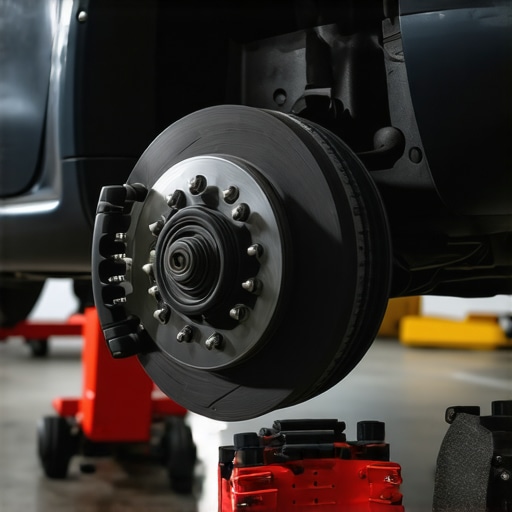My Personal Journey: Discovering the Importance of Proper Brake Maintenance
Driving has always been a part of my life, but it wasn’t until I faced a sudden brake issue that I truly understood how vital regular brake service is for safe driving. One rainy evening, while navigating a busy intersection, my brakes suddenly responded sluggishly, giving me a real scare. That experience motivated me to dive into the world of brake maintenance and learn the top tips to keep my vehicle in prime condition.
Why Brake Health Should Be Your Top Priority
As I researched, I came across compelling statistics from the Department of Transportation emphasizing that well-maintained brakes significantly reduce accident risks. I realized that many drivers overlook routine brake inspections, which can lead to dangerous situations on the road. Ensuring your brakes are in optimal condition isn’t just about vehicle performance; it’s about safety for everyone.
My Favorite Brake Service Tips for Peace of Mind
How Often Should You Really Get Your Brakes Checked?
Based on my experience and advice from auto experts, I recommend scheduling brake inspections at least once a year or every 12,000 miles. Regular checkups can catch issues like worn brake pads, fluid leaks, or rotor problems before they escalate. I now make it a habit to visit a trusted auto service provider for preventive maintenance, which has saved me from unexpected breakdowns.
What Are the Signs That Your Brakes Need Immediate Attention?
From my personal encounters, I learned to listen for squealing sounds, vibrations, or a soft brake pedal. If you notice any of these, it’s crucial to get your brakes inspected promptly. Ignoring these signs can lead to more costly repairs and, worse, dangerous driving conditions.
How Proper Brake Maintenance Enhances Your Driving Experience
Maintaining good brakes not only keeps you safe but also improves your vehicle’s overall performance. Smooth braking means better control, especially in emergency situations. Plus, well-cared-for brakes can extend the lifespan of your entire braking system, saving you money in the long run. I always feel more confident on the road knowing my brakes are reliable, especially during adverse weather conditions.
Curious About How to Choose the Right Brake Service?
If you’re wondering how to select a reputable brake service provider, I recommend researching local auto shops with positive reviews and certification. A good mechanic will do a thorough inspection and recommend necessary repairs without upselling unnecessary parts. For more detailed guidance, check out reputable sources like NHTSA’s safety standards.
Remember, taking proactive steps with your brakes can make all the difference in your daily driving safety. Have you experienced any brake issues lately? Share your story or tips in the comments below—I’d love to hear your insights!
Unlocking the Secrets of Effective Brake Maintenance for Safer Driving
As a seasoned automotive technician and safety advocate, I’ve seen firsthand how proper brake care can transform your driving experience. While many drivers focus on engine health or tire longevity, neglecting the brake system can lead to dangerous situations and costly repairs. Let’s delve into some expert insights on how to keep your brakes in peak condition, ensuring safety and peace of mind on every journey.
What Are the Common Myths About Brake Maintenance?
Before exploring practical tips, it’s essential to dispel misconceptions that might hinder your maintenance routine. A prevalent myth is that brakes last forever; however, brake components naturally wear over time, especially with frequent city driving or heavy loads. Another misconception is that brake fluid replacement isn’t necessary—many overlook that brake fluid absorbs moisture, which can compromise braking efficiency if not changed regularly. Recognizing these facts is crucial for proactive maintenance.
How Can You Detect Subtle Signs of Brake Wear Before It Becomes a Crisis?
Experienced drivers know that early warning signs often go unnoticed. Squealing brake pads, vibrations during braking, or a spongy pedal are indicators that your brake system needs attention. Regular inspections, ideally every 10,000 miles, can catch issues like uneven rotor wear or caliper problems before they escalate. Monitoring brake performance during different driving conditions helps you stay ahead of potential failures.
What Are the Nuanced Factors That Affect Brake Longevity?
Beyond routine use, several factors influence how long your brakes last. Driving style significantly impacts brake wear—aggressive braking or frequent high-speed stops accelerate component deterioration. Road conditions, such as hilly terrain or rough surfaces, also play a role. Moreover, the quality of replacement parts and the expertise of your mechanic affect overall brake system durability. Understanding these nuances allows for tailored maintenance schedules and informed decisions about parts replacement.
Why Is Brake Fluid Quality and Replacement Critical?
The integrity of your brake fluid directly impacts system responsiveness. Over time, moisture absorption can cause corrosion and reduce boiling points, leading to brake fade during intense use. According to the Brake & Front End Magazine, replacing brake fluid every 2-3 years is a best practice recommended by manufacturers. This simple step preserves hydraulic performance and extends the lifespan of master cylinders and calipers.
< >
>
Proper brake fluid maintenance is vital for consistent braking performance and safety.
How Can You Optimize Your Brake System for Long-Term Reliability?
Routine inspections are just the starting point. Ensure that your mechanic checks for uneven pad wear, rotor condition, and caliper function during each service appointment. Consider upgrading to high-quality brake pads or rotors if you frequently drive in demanding conditions. Additionally, avoid harsh braking and give your vehicle time to slow down gradually, reducing undue stress on brake components. Combining preventive care with informed driving habits ensures your brakes remain reliable for years to come.
Have You Considered the Impact of Modern Brake Technologies?
Advancements like regenerative braking in hybrid and electric vehicles or adaptive brake systems offer enhanced safety features. These innovations not only improve braking efficiency but also reduce wear and tear on traditional components. Staying updated with the latest brake technology can help you make smarter choices about maintenance and upgrades. For detailed insights into cutting-edge brake systems, consult trusted sources like the National Highway Traffic Safety Administration.
Do you have experiences with specific brake upgrades or maintenance challenges? Share your stories or ask questions in the comments—your insights can help fellow drivers navigate their brake care journey more effectively!
Beyond the Basics: The Intricate Factors That Influence Brake System Longevity
Reflecting on my journey through automotive care, I’ve come to appreciate that brake longevity isn’t merely a matter of routine checks. It’s a complex interplay of driving habits, environmental conditions, and the subtle health of each component. For instance, I noticed that after a particularly hilly trip, my brakes felt less responsive, prompting me to scrutinize rotor heat and caliper performance more closely. These nuanced factors, often overlooked, can dramatically affect how long your brake parts last and how well they perform under stress.
How Do Modern Brake Technologies Reconfigure Our Maintenance Paradigms?
As I delved into the latest innovations, I was fascinated by how systems like regenerative braking in electric vehicles or electronic stability controls have shifted traditional maintenance routines. These advancements reduce wear on physical components, yet they demand a new level of understanding. For example, regenerative braking can extend pad life but might also mask underlying issues like uneven rotor wear, which require specialized diagnostics. Staying informed about these cutting-edge systems, as highlighted in the NHTSA’s latest updates, enables us to adapt our care strategies effectively.
What Are the Subtle Signs of Emerging Brake System Problems?
From my own experience, I’ve learned that not all warning signs are loud or obvious. Sometimes, a slight change in pedal feel or a faint whirring sound during braking can signal early issues like caliper sticking or moisture buildup. Regularly monitoring these subtle cues, especially after intense driving days, can prevent small problems from escalating. I now keep a mental checklist of these indicators, which has become a cornerstone of my proactive maintenance approach.
Can Advanced Materials and Upgrades Enhance Brake Reliability?
Exploring beyond OEM parts, I found that high-performance brake pads made from ceramic composites or carbon-ceramic rotors significantly improve durability and heat resistance. These upgrades are particularly beneficial for drivers who frequently engage in spirited driving or towing heavy loads. However, they also require a nuanced understanding of compatibility and proper bedding procedures. Sharing experiences with fellow enthusiasts has revealed that tailored upgrades, when done correctly, can extend the lifespan of your braking system remarkably.
How Do I Balance Cost, Performance, and Longevity in Brake Maintenance?
This question often weighed on my mind, especially when considering premium parts versus budget options. After experimenting with different brands and materials, I found that investing in quality parts and professional installation pays off in the long run. Regular maintenance, combined with mindful driving habits—like gentle braking and coasting—can maximize the benefits of these investments. For detailed guidance, consulting trusted sources like Brake & Front End Magazine has been invaluable.

Proper brake maintenance is a nuanced craft that blends personal experience, technological awareness, and proactive care. I invite you to reflect on your own experiences—have you noticed subtle signs of wear or experimented with upgrades? Sharing your insights can foster a community of informed drivers dedicated to safety and vehicle longevity. Feel free to leave comments or ask questions below; I’m eager to hear your stories and continue this journey of mastering brake health together!
Exploring the Impact of Brake System Diagnostics on Long-Term Vehicle Integrity
In my journey to master automotive care, I’ve realized that some of the most subtle yet critical indicators of brake health lie beneath the surface. Advanced diagnostics, such as ultrasonic testing of rotors or electronic caliper sensors, enable a level of insight previously accessible only through specialized equipment. These technologies allow me to detect issues like micro-cracks or uneven pad wear long before they manifest as audible squeals or vibrations, significantly reducing repair costs and downtime.
How Do High-Performance Brake Materials Challenge Conventional Maintenance Routines?
When I upgraded to ceramic brake pads and vented rotors, I was initially skeptical about their longevity and maintenance needs. However, I learned that advanced materials, such as carbon-ceramic composites, have unique thermal properties that demand different bedding procedures and inspection intervals. According to a comprehensive review in Automotive World, these materials can endure higher temperatures and resist fade, but they also require precise installation and break-in routines to reach their full potential. This experience taught me that embracing cutting-edge materials can redefine maintenance strategies, provided you understand their specific requirements.
What Are the Benefits of Incorporating Predictive Maintenance Technologies for Brake Systems?
Integrating predictive maintenance tools, such as IoT-connected sensors and data analytics, has revolutionized how I approach brake care. These systems monitor parameters like brake fluid temperature, pad wear levels, and rotor condition in real-time, alerting me proactively before any critical failure occurs. The predictive insights not only optimize maintenance schedules but also extend component lifespan by ensuring timely interventions. For detailed insights into implementing such systems, I recommend exploring the latest research documented by NHTSA, which emphasizes the importance of data-driven safety enhancements.
Have you considered adopting predictive diagnostics for your vehicle? Sharing your experiences or questions can help foster a community committed to safer, smarter driving practices.
How Can Personalized Brake Maintenance Routines Be Tailored to Diverse Driving Conditions?
Through my extensive experience, I’ve learned that no single maintenance routine fits all driving styles. For instance, city commuters facing frequent stop-and-go traffic benefit from more frequent checks, while long-haul drivers might focus on rotor heat dissipation and caliper lubrication. Adapting maintenance schedules based on environmental factors, load conditions, and driving habits ensures optimal brake performance and durability. Consulting authoritative sources like Brake & Front End Magazine has helped me develop a nuanced approach to personalized vehicle care.
What specific challenges have you encountered with your brake system? Your insights could provide valuable lessons for fellow enthusiasts seeking to refine their maintenance routines.
How Do Emerging Technologies Like Autonomous Braking Systems Influence Future Maintenance Paradigms?
My exploration into autonomous braking and driver-assist features has revealed a paradigm shift in vehicle maintenance. These systems, such as adaptive cruise control with automatic emergency braking, rely on a network of sensors, cameras, and electronic control units that require specialized calibration and software updates. While they reduce physical wear on traditional components, they introduce new diagnostic complexities, emphasizing the need for advanced diagnostic tools and updated training for technicians. As highlighted by the NHTSA, staying abreast of these innovations is crucial for maintaining vehicle safety and performance in the era of autonomous mobility.
Are you curious about how these innovations might impact your vehicle’s maintenance routine? Engaging with expert insights and sharing your experiences can help navigate this evolving landscape.

Things I Wish I Knew Earlier (or You Might Find Surprising)
The Hidden Lifespan of Brake Components
One thing I wish I knew sooner is that brake pads and rotors actually have a finite lifespan, and ignoring this can lead to unexpected failures. I used to think brakes lasted forever, but after a close call, I realized that regular replacements are essential for safety.
Subtle Signs Are Your Best Friends
Early warning signs like a soft brake pedal or slight vibrations can be easy to overlook, yet they are crucial indicators of wear. Paying close attention to these subtle cues can save you from costly repairs and dangerous situations.
Quality Matters More Than You Think
Choosing high-quality brake parts might seem expensive initially, but I found that they last longer and perform better, which ultimately saves money and stress. Don’t cut corners when it comes to safety-critical components.
Driving Habits Impact Brake Health
Aggressive braking and frequent high-speed stops accelerate brake wear. I learned to adopt smoother driving habits, like coasting and gentle braking, to extend the life of my brake system.
Modern Technologies Are Changing Maintenance
Advancements like regenerative braking and electronic stability controls reduce physical wear but add diagnostic complexity. Staying informed about these technologies helps me understand when professional maintenance is needed.
Resources I’ve Come to Trust Over Time
- National Highway Traffic Safety Administration (NHTSA): Their website offers comprehensive safety standards and updates on vehicle technology, which I find invaluable for understanding modern brake systems. Check out their latest guidelines for safer driving.
- Brake & Front End Magazine: This publication provides detailed articles on brake maintenance, upgrades, and industry insights. It’s my go-to for staying current with best practices and innovative materials.
- Automotive World: A trusted source for in-depth reviews of new automotive technologies, including high-performance brake materials. I recommend it for anyone interested in advanced components and maintenance strategies.
Parting Thoughts from My Perspective
Proper brake maintenance is more than just routine checks; it’s about understanding your vehicle’s unique needs and staying proactive. From recognizing subtle signs of wear to embracing new technologies, taking care of your brakes ensures safer driving and peace of mind. Remember, investing a little time and resources now can save you from major headaches later. If this resonated with you, I’d love to hear your thoughts or experiences—feel free to share in the comments or pass this along to a fellow driver who might benefit. Safe travels and happy braking!

